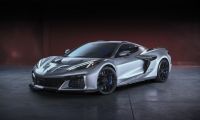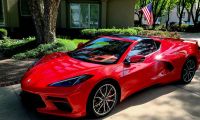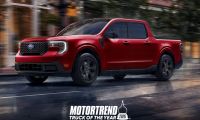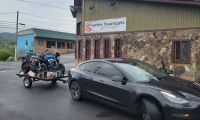Despite outselling entire brands (like Cadillac) and the entire crossover lines at many others, the Tesla Model Y has yet to be tested by the Insurance Institute For Highway Safety (IIHS). We communicated with the Institute and asked if the results were almost complete. After all, a vehicle like the hot Model Y crossover that is posting up monthly US delivery figures of over 10,000 units must be a priority compared to some of the low-volume models that the group has already completed testing on. To our surprise, we were informed by IIHS that the Tesla Model Y safety testing has not yet started, and in fact, it is not even scheduled.
Given Tesla's contentious dealings with, well everyone, but IIHS in particular, we looked a little more deeply into why a model that has such high delivery numbers is not on the IIHS safety testing schedule.
Related Story: Tesla Model S At Bottom of IIHS Test Results – Again
Who Is IIHS?
The Insurance Institute For Highway Safety (IIHS) conducts the most comprehensive safety testing of automobiles in the American market. The Top Safety Pick and Top Safety Pick Plus designations are highly coveted by automakers to help promote their products (like Tesla does here), and shoppers find the awards a reassuring way to know which models are the safest without having to pour through facts and figures. No other agency conducts the full array of crash tests, headlight effectiveness evaluation, active driver-assist system rankings, and other safety testing that IIHS does. The group does not accept free vehicles for its testing, but buys them on the open market just like a shopper would. That helps eliminate "ringers." The group also doesn't rely on funding from your tax dollars. Its funding comes from a group of large insurance companies.
Related Story: Model 3 Is Tesla’s First Vehicle to Earn Top Safety Pick Plus Award From IIHS
Why The Model Y Is Not On the IIHS Schedule
The IIHS schedule is normally determined by a few factors. Included is the vehicle's availability. After all, the agency cannot test what it cannot buy. That was one reason the Model 3 testing took so long. For complete testing, not one, but many vehicles are needed. In addition, IIHS offers up spots for testing to any automaker who wants to nominate a new or updated vehicle for inclusion on its schedule. As with the prior Tesla vehicles, Tesla opted not to nominate the Model Y (according to our contact at IIHS). Had Tesla opted to do so, the Model Y would likely have already been tested, or it would be on the schedule.
This year, two other factors mean that it will be a long time before Model Y shoppers can find out how well the crossover compares to other Top Safety Pick Plus models like the Audi e-Tron. First, COVID slowed down the work at the Institute a bit. Not entirely, but it has caused some delays in the plan the group had in place before March. Second, the Institute is hard at work updating its side-impact testing procedures.
The Tesla Model Y is now outselling low-volume peers like the Audi e-Tron (under 700 units in September) by almost 20 to one. Logic would dictate that the vehicles most likely to be owned and operated would be moved to the front of the line. However, to be in line, Tesla would have had to nominate its Model Y. Why would Tesla not do so? Is this another case of Tesla opting to ignore IIHS? Perhaps just like Tesla has abandoned the press seeking to help tell Tesla's success story, Tesla has also abandoned routine communication with the folks that conduct impartial testing to prove the safety of its vehicles.
Story Note: At the time of this story's publication, NHTSA had not yet tested the Model Y either. Leaving shoppers with no available safety data.

John Goreham is a life-long car nut and recovering engineer. John's focus areas are technology, safety, and green vehicles. In the 1990s, he was part of an academic team that built a solar-electric vehicle from scratch. His was the role of battery thermal control designer. For 20 years he applied his engineering and sales talents in the high tech world and automotive supply chain market. In 2008 he retired from that career to chase his dream of being an auto writer. In addition to Torque News, John's work has appeared in print in dozens of American newspapers and he provides reviews to many vehicle shopping sites. You can follow John on Twitter, and view his credentials at Linkedin
Image credits can be seen by hovering one's mouse over the images in the story.











